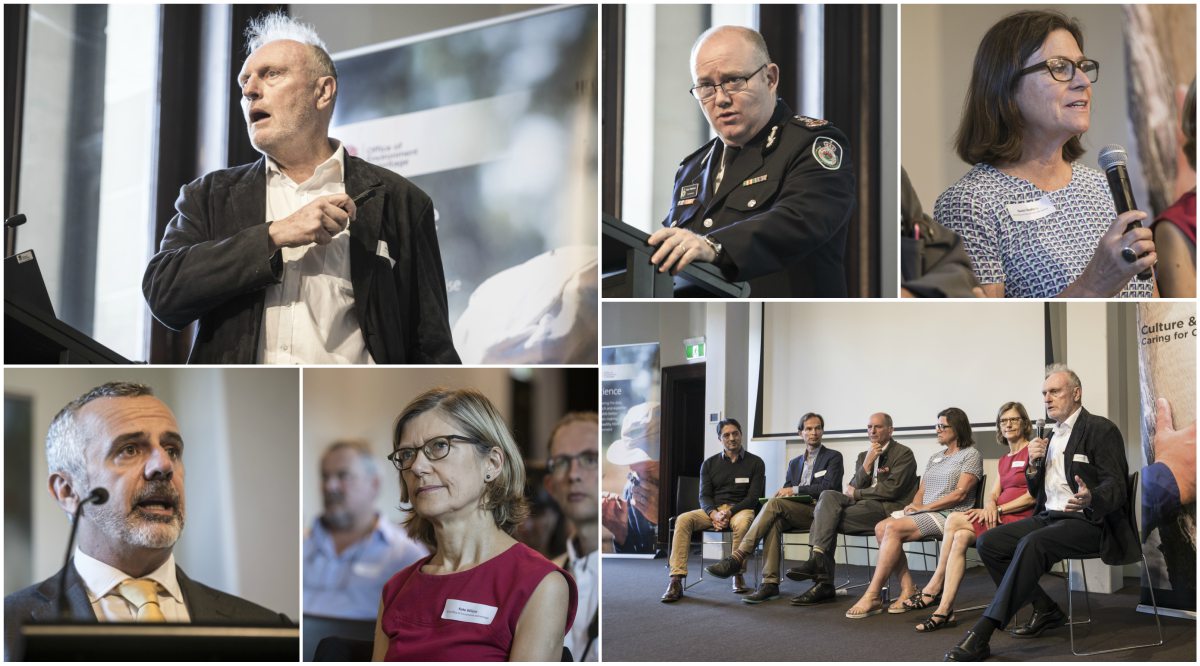February 28, 2018
Bushfire research helping save lives and livelihoods
Bushfire Risk Management Research Hub to help understand how planned burning can reduce risk to people and the environment.
A new bushfire research hub aims to provide a better understanding of how planned burning can be effectively used to reduce bushfire risk to people and the environment while protecting biodiversity and human health.
The $4 million, five-year project, announced today (28 February) by Minister for the Environment Gabrielle Upton and Minister for Emergency Services Troy Grant, will be delivered through a partnership between the Office of Environment and Heritage (OEH) and the University of Wollongong (UOW).
UOW will host the Bushfire Risk Management Research Hub, leading a team of world-class experts from Western Sydney University, the University of NSW, and the University of Tasmania.
"The Bushfire Risk Management Research Hub will provide the NSW-centred scientific research we need to ensure the safety of our communities, property and the environment," Ms Upton said.
"The Hub will host a team of world-class experts who will work with the communities most vulnerable to bushfires."
Some of the key research focuses are:
- Impacts and management of hazard reduction burns;
- Drivers of bushfire frequency and severity;
- Impacts on air quality; and
- Impacts on the environment and endangered plants and animals.
The research findings will help build enhanced fire management strategies into the future, which will reduce the risk bushfires pose to people, property and the environment.
Use of planned burning is a long-standing bushfire risk mitigation strategy, yet urban growth, climate change and cultural heritage have created a challenging environment for emergency services and land management agencies.
Over the five years of the project, the hub will develop best practice recommendations for the use of planned burning: where it should take place, when, and how much burning should occur to reduce the risk to people and the environment in a cost-effective manner.
The researchers will draw on the best scientific methods in understanding fire ecology as well as drawing on Indigenous fire management practices.
 The Bushfire Risk Management Research Hub will develop best practice recommendations for the use of planned burning.
The Bushfire Risk Management Research Hub will develop best practice recommendations for the use of planned burning.
Minister for Emergency Services Troy Grant welcomed the partnership and the Hub's specialised focus on NSW bushfires.
"Each year bushfires pose significant risks to lives and property across our state. This Hub brings together academic expertise and practical knowledge from our firefighters to develop ways we can mitigate bushfires in the future," Mr Grant said.
"What works for one area may not work for another, so it's great that this research will look at local solutions across the state," Mr Grant said.
Long-standing debate about managing fire using prescribed burning has been made more complex with a new understanding of the impacts of greenhouse gasses, and cultural burning practices.
The hub research will lead to a better way to balance the competing pressures.
Expected outcomes include innovative research insights into fire behaviour and decision-support and training systems for the agencies responsible for land management and planned burning.
UOW's Professor Ross Bradstock, who will lead the new hub, said the OEH funding would deliver world-class research helping address significant future challenges.
"As we face a changing climate and an increasing risk of more systematic and intense bushfire activity, we need to be better prepared," Professor Bradstock said.
"This research will also expand our knowledge to manage hazard reduction burns. We'll look at how we can lessen the impacts of planned burns, and how they can be better used to change future fire patterns."
Professor Bradstock said the hub was an opportunity to bring together Australia's leading fire researchers and have them work alongside environmental and land management agencies.
:format(jpg)/prod01/channel_3/assets/live-migration/www/images/content/groups/public/web/media/documents/mm/uow244064.jpg)